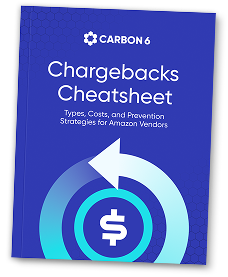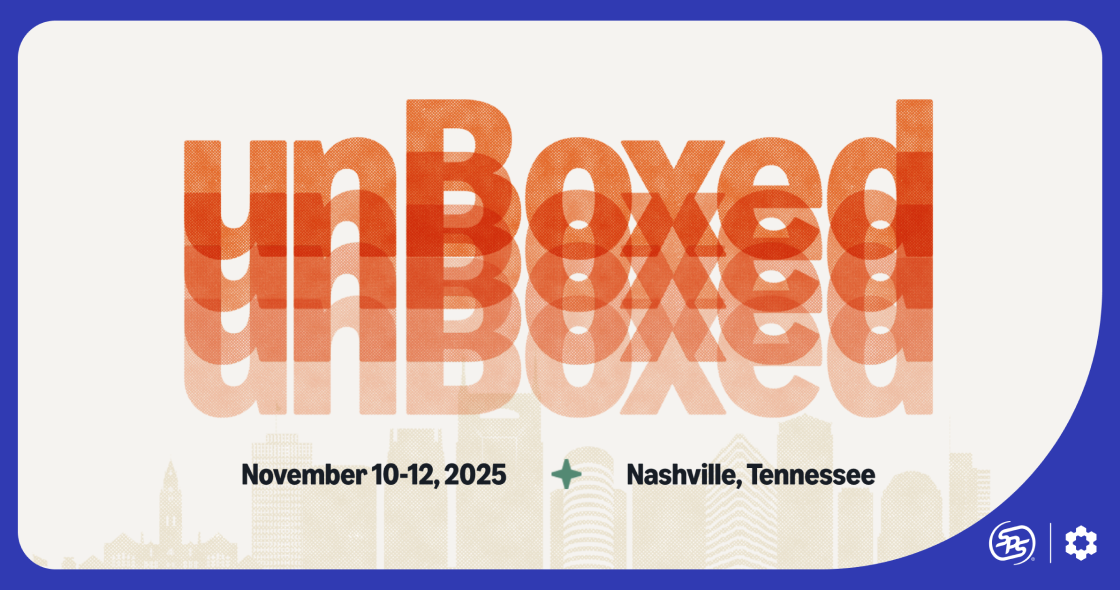Listen to This Article
Top Amazon Sellers News This Week
This week’s Amazon updates bring important changes for vendors and advertisers, with new compliance rules taking effect and broader ad access across major streaming platforms.
- Amazon tightens vendor compliance with new chargeback and return policies: Amazon has introduced a new “In Full Delivery” chargeback category and will reduce the Not Filled fee from 10% to 5%. Additionally, vendors may be charged for unsold inventory on products flagged as “frequently returned” starting June 18, 2025.
- Amazon expands Connected TV (CTV) reach with Roku and Disney ad partnerships: Amazon Ads’ new DSP integrations with the two streaming giants unlock access to 80% of US CTV households and premium streaming inventory, enabling smarter, more efficient campaigns by Q4 2025.
Learn how chargebacks and CTV partnerships affect your business and how to stay ahead this peak season.
New Amazon Chargeback Category Consolidates 3 Existing Types
Amazon is implementing key changes to its Vendor Central chargeback system with a new “In Full Delivery” category, according to vendor notifications shared with the Carbon6 team, with full enforcement starting July 21, 2025, for US and Canadian vendors.
What is “In Full Delivery” and How Does It Work?
The new “In Full Delivery” chargeback type consolidates 3 existing penalty categories into a single framework with distinct subtypes.
- Not Filled: Shipping fewer units than confirmed (now charged at 5% of COGS, down from 10%).
- Overage: Shipping more units than ordered (charged at 100% of COGS for the overage quantity),
- Down-Confirmed: Adjusting confirmed Purchase Order (PO) quantities after the allowed five-day window (charged at 3% of COGS).
This restructuring eliminates the previous “Unconfirmed PO Unit Chargeback” entirely while reducing the Not Filled penalty from 10% to 5%. This change is a welcome relief for vendors who have struggled with fulfillment accuracy.
What Triggers an Amazon Vendor Chargeback?
Amazon will use a combination of:
- Your confirmed PO quantities. If you confirm 1,000 units on a PO but only shipped 950, you’ll be hit with a 5% chargeback on the 50-unit shortfall.
- Advance Shipment Notification (ASN) data. If you down-confirm or cancel a quantity after the five-business-day grace period from the start of the handoff window, even for logistical delays, Amazon applies a 3% penalty on the adjusted units.
- Invoice paid quantities. If you ship 100 extra units beyond the PO, expect a 100% cost chargeback on those overages, no exceptions.
Mismatches between these data points will now automatically flag non-compliance and generate a chargeback, no manual review required.

Why This Matters to Vendors
Amazon states that this consolidation is meant to “reduce complexity” and help vendors better manage reconciliation. However, in practice, this means:
- Fewer excuses: Errors across ASNs, invoices, and PO confirmations are now more easily flagged.
- Tighter timelines: Down confirmations must be handled within a rigid 5-day post-window timeline.
- Higher stakes: While the Not Filled chargeback now has a reduced fee, Overage and Down Confirmed chargebacks remain steep, with no waiver policies unless you meet specific historical performance thresholds.
Stop losing money to Amazon vendor chargebacks with ChargeGuard. Our automated deduction management solution identifies and disputes fees with a 99% success rate, putting money back in your pocket without the hassle. Start your free recovery audit now.
Quick Tips to Prevent “In Full Delivery” Chargeback
- Always match your ASN and invoice quantities with what you’ve confirmed.
- Make any necessary quantity changes within 5 business days of the ship window start date.
- Regularly review your Operational Performance dashboard in Vendor Central to spot defects early.
- If your 12-week average for Not Filled stays below 5%, Amazon will waive those chargebacks for a given week.
- There is zero tolerance for shipping more than ordered, so confirm and ship exactly what’s on the PO.
In summary, compliance requirements are tightening, and chargebacks will be triggered automatically based on mismatched data. With penalties starting July 21, vendors should review fulfillment, confirmation, and invoicing processes now to avoid costly mistakes.
Amazon’s New High Return Rate Policy Could Cost Vendors More Than Just Unsold Inventory
Amazon is tightening product standards for its US vendors with a new High Return Rate Program Policy, which took effect on June 18, 2025. Under this policy, products marked with the “Frequently Returned Item” badge may lead to unexpected costs and forced returns, even if the goods remain unsold.
How the Policy Works
The retail giant now has the authority to return unsold inventory at the vendor’s expense for any product tagged with the Amazon Frequently Returned Item badge. Here’s how it plays out:
Badge Criteria
Products are badged based on return rates relative to other items in the same category. Amazon uses:
- Recent sales and return data
- Product-level and offer-level return rates
- Comparisons to products with similar attributes
- Thresholds that are monitored and updated regularly
Where Vendors Can Check
- Badge visibility: Product Detail Page (PDP)
- Return rates: Concessions Hub in Vendor Central
- Customer complaints: Voice of the Customer Dashboard
What Happens When a Product is Badged
Amazon may immediately initiate a return of unsold inventory. Vendors are required to:
- Provide a return authorization.
- Refund 100% of the product cost.
- Pay an additional 10% shipping and handling fee.
Vendors remain financially responsible even if inventory doesn’t sell; rejecting a return can lead to disposal fees on top of refunds and handling costs. While badged products can be unbadged if return rates improve, there’s no set timeline for removal.
With this Amazon high return rate policy, the retailer is raising the stakes for low-performing products and simultaneously putting vendors on the hook for unsold units. Audit product pages and resolve return issues to avoid costly returns.
Maximize your Amazon revenue with our 1P and 3P Reimbursements guide. Learn how to get back what you’re owed under Amazon’s evolving policies through proven strategies for ongoing recovery. Download your free guide now.
Binge & Buy: New Amazon CTV Deals Turn Viewers into Shoppers
Amazon Ads is expanding its CTV reach through new partnerships with Roku and Disney, giving DSP users access to 80% of US households and premium streaming inventory. These integrations let brands combine viewing behavior with ecommerce data for more precise, cost-effective campaigns.
What the Amazon Roku Deal Delivers
Launching in Q4 2025, Amazon’s DSP will integrate directly with Roku’s top-performing inventory, including the Roku Channel and content accessed via Roku and Fire TV devices.
- CTV Scale: Reach 80% of US connected-TV households.
- Better Targeting: Identity matching cuts redundant impressions.
- Stronger Results: 40% more unique viewers, 30% fewer repeat ads.
- Seamless Collaboration: Amazon and Roku unite around performance and reach. Roku devices are sold on Amazon, and Prime Video is available to Roku’s 90M+ household base.
“We’re uniquely positioned to prove performance and differentiate DSP offerings for our shared advertisers and marketers,” said Charlie Collier, President, Roku Media.
Demystify Amazon DSP ads with our comprehensive DSP white paper. Learn how top brands leverage Amazon’s first-party data to create powerful retargeting campaigns and reach high-intent customers across multiple platforms. Download your free DSP guide now.
Amazon & Disney: From Content to Commerce
One day after announcing its Roku ad partnership, Amazon Ads revealed its second blockbuster deal. This time with Disney Advertising, further expanding CTV inventory while strengthening targeting capabilities.
- Commerce + Content: The integration allows advertisers to match Disney streaming behavior with Amazon purchase and browsing data. For example, a pet food brand can target households that stream Disney content and show purchase interest in pet products on Amazon.
- Precision Tools: Campaigns will use Disney’s Magic Words (contextual targeting), Disney Select (first-party audience data), and Amazon Publisher Cloud + Disney Compass (joint planning, activation, and measurement).
- Global Access: Disney+ inventory is now available via Amazon DSP in eight European markets, including the UK, Germany, and Spain.
As CTV grows more competitive, brands are seeking greater efficiency, reach, and ROI. Amazon’s deals with Roku and Disney deliver on that with scaled content, deeper insights, and smarter targeting.
Expand your reach with DSP Prime. Our expert-managed advertising solution leverages Amazon’s first-party data to connect your brand with high-intent audiences across websites, apps, and streaming platforms. Get your customized growth plan now and launch in just 10 days.
Other Amazon Seller Updates This Week
1. Save on Cross-Currency Transfers with Amazon Seller Wallet
Enroll by June 27, 2025, to access a 0.5% cross-currency transfer fee for six months, saving up to $1,000 on $100,000 in transfers, with lower rates for higher volumes.
2. Amazon Vine Expands Access to Resellers in Global Markets
Authorized resellers in select countries can now use Amazon Vine to generate reviews for new or slow-moving ASINs by offering free products to trusted reviewers.
3. View Reserves More Clearly with Deferred Transactions Reporting
Sellers can now view delivery date-based reserves as Deferred transactions in the Payments dashboard, with updated help content to clarify payout timing.
Avoid Penalties, Maximize Reach
This week’s Amazon seller updates raise the bar on accuracy and readiness. Vendors and advertisers must refine operations and use data-driven tools to stay competitive.
What you can do now to get ahead:
- Audit your chargeback risk: Align PO confirmations, ASNs, and invoices to avoid “In Full Delivery” chargebacks.
- Reduce return exposure: Use the Concessions Hub to catch and fix high-return ASINs before they get flagged.
- Strengthen PDP content: Improve images, descriptions, and sizing info to reduce return risk, especially before Prime Day 2025.
- Test CTV with Amazon DSP: Run campaigns in Q4 on Roku and Disney+ to boost reach and cut wasted ad spend.
For nearly four years, we’ve kept sellers informed with our Amazon Sellers Newsletter, publishing over 200 issues packed with policy changes, announcements, and community events. Subscribe or share with your team to get these insights delivered weekly.








